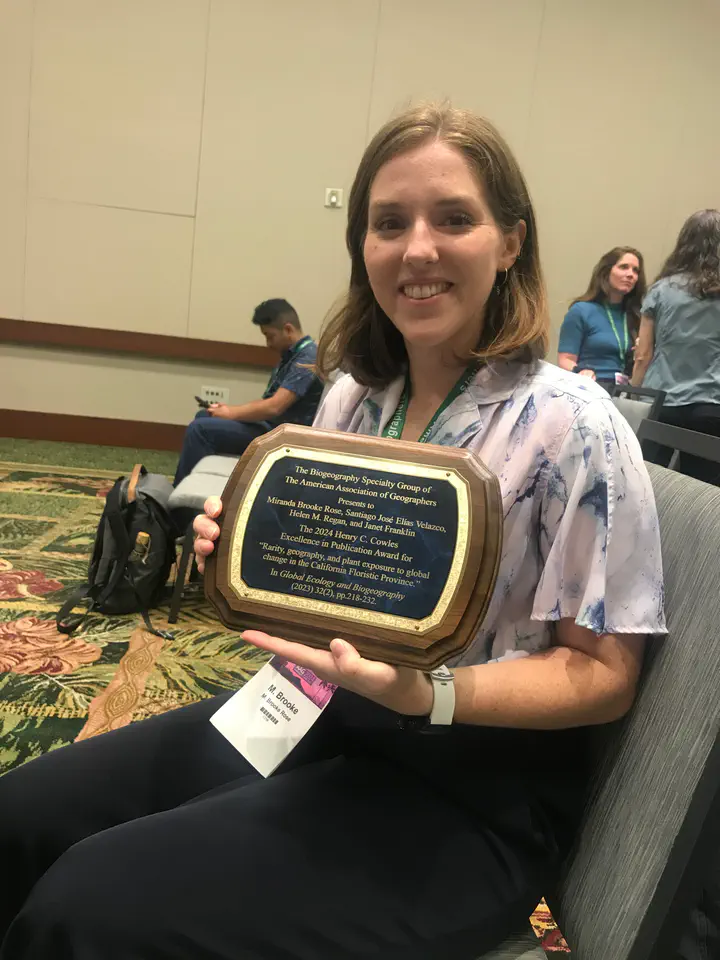Dr. Brooke Rose Receives Two Prestigious Awards at AAG 2024

Dr. M. Brooke Rose, a postdoctoral scholar working with Professor Janet Franklin in the Center for Open Geographical Sciences, Department of Geography, receives both the Cowles award for Best Paper in Biogeography, and an award for the AAG Biogeography Specialty Group (BSG) Student Paper Award in the Doctoral Category.
Dr. Rose received and high praise from the judges, for the talk she presented on April 19 at the 2024 AAG Annual Meeting in Honolulu, HI, entitled “Going up or down? Species-specific habitat dynamics under climate change”, winner of the AAG Biogeography Specialty Group (BSG) Student Paper Award in the Doctoral Category.
Dr. Rose was also the lead author on a paper published last year that received an award from the American Association of Geographers (AAG) at their annual meeting on April 19, 2024. The Cowles Award was established in 1998 in honor of Henry Cowles, who published the first paper to appear in the Annals of the Association of American Geographers: “The Causes of Vegetation Cycles” (1911). The award is given annually by the Biogeography Specialty Group of the AAG, in recognition of the best biogeographical publication of the year. The paper, published in a high impact journal Global Ecology and Biogeography (vol 32, pp. 218-233, 2023), is titled “Rarity, geography and plant exposure to global change in the California Floristic Province” and was written with coauthors S.J.E Velazco, H.M. Regan and Janet Franklin.
The authors analyzed 111 plant species in the California Floristic Province. Their main findings were that species with restricted range sizes and low topographic heterogeneity across their distribution were predicted to be the most exposed to climate change, while species at low elevations were the most exposed to habitat loss via land use change. However, even some broadly distributed species were projected to lose >70% of their currently suitable habitat due to climate and land use change if they are in geographically vulnerable areas.